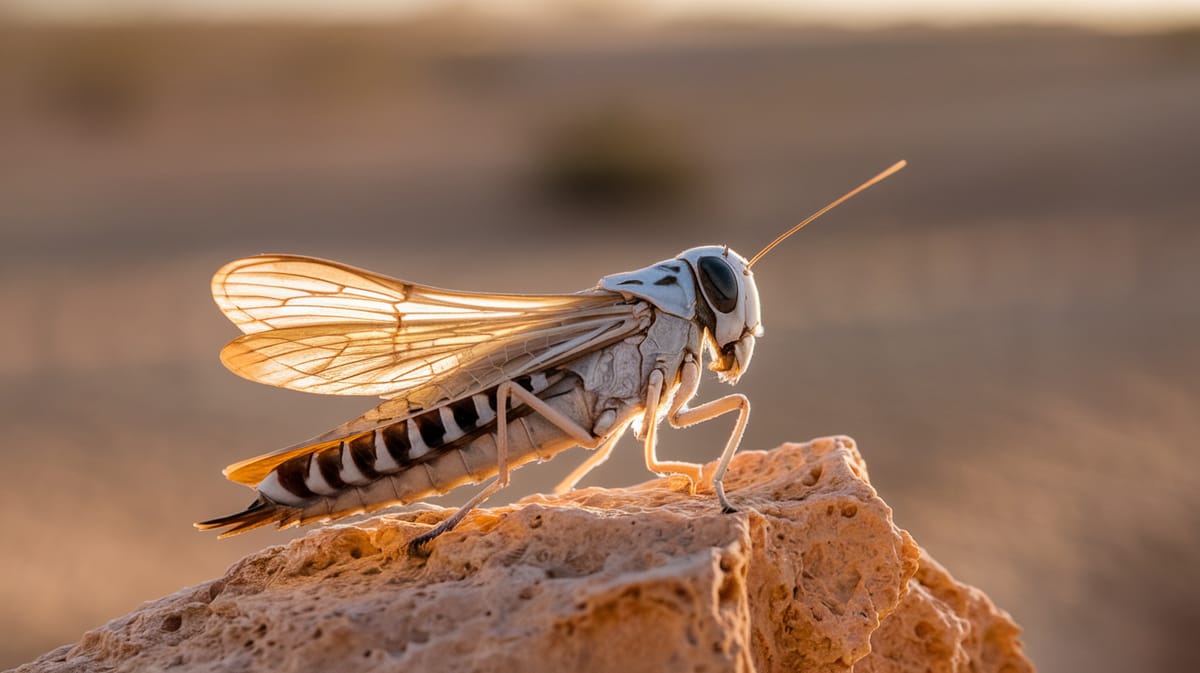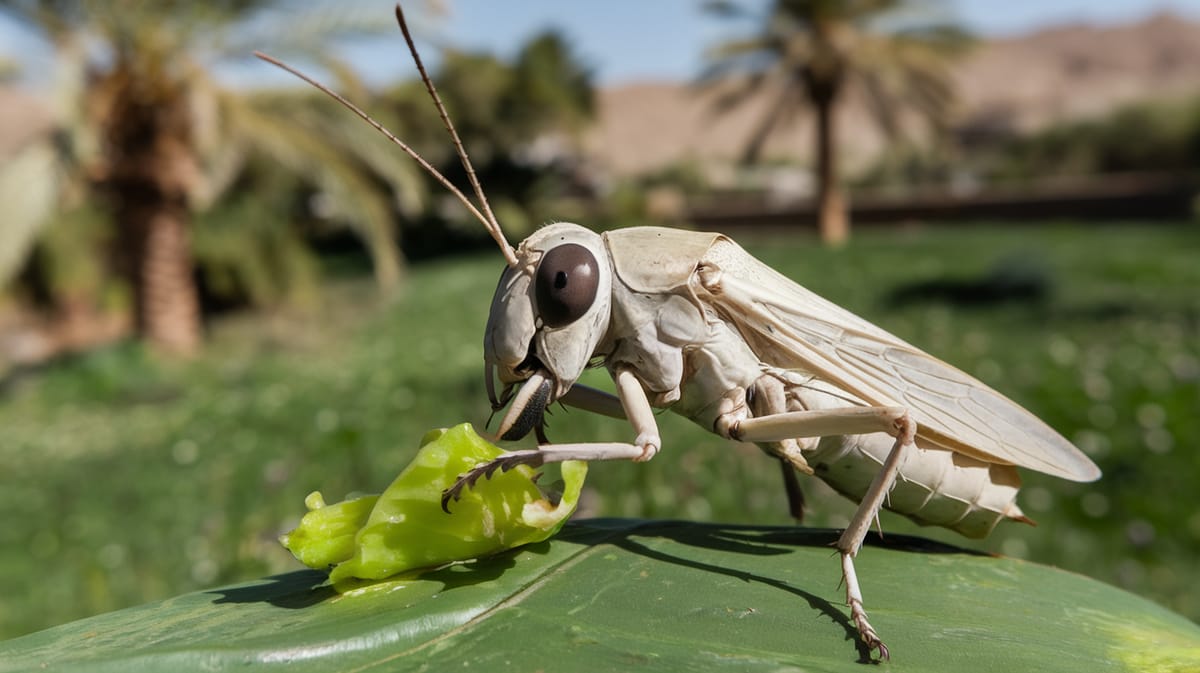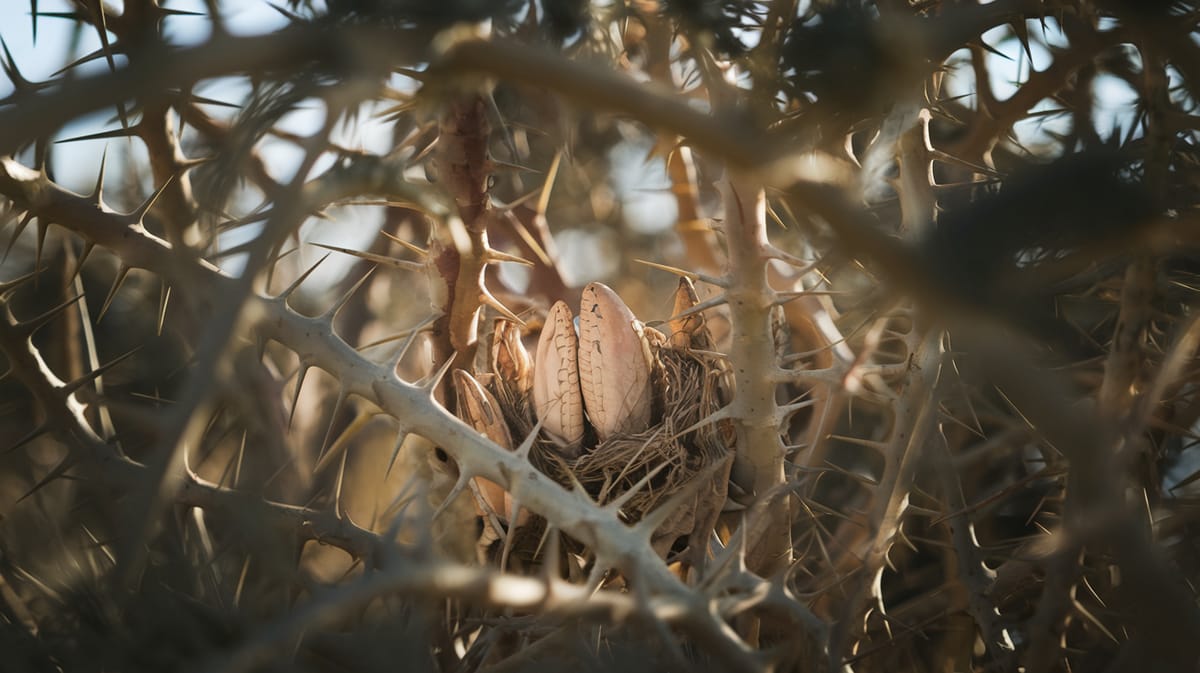Desert Locust
Swift and formidable, the Desert Locust forms massive swarms that can devastate crops across continents. Their synchronized movement and rapid reproduction make them a formidable force in nature.

Key Insights at a Glance
Did You Know?
Taxonomy & Classification
Desert locusts exhibit remarkable adaptability, shifting between solitary and gregarious phases, enabling them to survive and thrive in harsh environments. Let's understand the evolutionary journey and classification of these remarkable herbivores.
Global Presence
Schistocerca gregaria, the desert locust, inhabits 60 countries across Africa, the Middle East, and Asia, covering 20% of Earth's land surface.
Evolutionary Adaptations
Originating millions of years ago, desert locusts evolved unique phase polyphenism, adapting to climate shifts and food scarcity.
Lifecycle and Growth
A remarkable journey of transformation from Egg to Adult.
Egg
Eggs are laid in the soil and develop rapidly, depending on temperature and moisture conditions.
Nymph
Nymphs, known as hoppers, lack wings and molt five times, progressively growing larger.
Adult
Adults develop full wings, allowing for extensive migration, and participate in swarming behavior critical for survival.
Dietary Habits
A voracious feeder with remarkable adaptability, this insect consumes vast amounts of vegetation, causing devastation to crops and natural habitats.
| DIET TYPE | DESCRIPTION |
|---|---|
| Primary Diet | Feeds primarily on grasses, cereal crops, and leaves, rapidly stripping fields of their vegetation. |
| Secondary Diet | Consumes shrubs and trees when primary food sources are depleted or unavailable. |
| Occasional | Occasionally feeds on fruits and flowers, especially during swarm phases when food is scarce. |

Behaviour and Adaptations
Discover the remarkable traits that enable the Desert Locust to thrive in harsh environments.
Swarm Formation
Forms massive swarms to efficiently migrate and find food.
Color Change
Alters colors to signal maturity and environmental changes.
Resilient Digestion
Digestive system adapts to varied plant diets, ensuring survival.
Ecosystem Impact
Desert Locusts play a crucial role in maintaining ecological balance through various contributions.
Nutrient Recyclers
Their feeding behavior helps in breaking down plant material, enriching soil nutrients.
Food Source
Serve as a vital food source for birds and reptiles, supporting biodiversity.
Habitat Shapers
Swarm activity influences vegetation patterns, promoting diverse plant growth.
Conservation Challenges
Understanding and addressing the major threats to Desert Locust populations.
Habitat Loss
Expansion of agriculture reduces natural breeding sites for Desert Locusts.
Climate Change
Altered weather patterns increase locust swarm size and frequency.
Chemical Control
Pesticide use harms non-target species and ecosystems.
Frequently Asked Questions
How long do Desert Locust live?
Desert Locusts usually live for about three to five months. The lifespan can vary based on environmental conditions like food availability and climate. During their lifetime, they go through different phases, including solitary and gregarious, altering their behavior and appearance.
What do Desert Locust eat?
Desert Locusts are voracious eaters that consume a wide variety of vegetation, including crops, leaves, and grasses. In swarms, they can devastate agricultural fields, leading to significant damage to food supplies and economic losses in affected regions.
Are Desert Locust poisonous?
Desert Locusts are not poisonous to humans or animals. They pose no direct threat through toxicity, but their swarming behavior can lead to food scarcity and economic challenges by destroying crops.
Are Desert Locust endangered?
Desert Locusts are not considered endangered. They are highly adaptable and can thrive in various environments, especially in arid and semi-arid regions. Their ability to reproduce rapidly in favorable conditions helps maintain their population.
What do Desert Locust symbolize?
Desert Locusts often symbolize destruction and famine due to their ability to devastate crops and cause food shortages. In some cultures, they are seen as a symbol of transformation and change, reflecting their life cycle and migratory behavior.
Do Desert Locust bite?
Desert Locusts do not bite humans. They primarily feed on plants, using their mouthparts to chew vegetation. While they are not harmful through biting, their swarms can have significant impacts on agriculture.
What color are Desert Locust?
Desert Locusts can change color based on their environment and phase. Solitary locusts are usually green or brown. In the gregarious phase, they become yellow and black, which helps them blend into swarm environments and signal their presence to other locusts.
Does a Desert Locust have wings?
Yes, Desert Locusts have wings. Their wings are well-developed, allowing them to fly long distances, especially during the gregarious phase when they form swarms and migrate in search of food and favorable breeding conditions.
What does a Desert Locust look like?
Desert Locusts have a robust body, large hind legs for jumping, and two pairs of wings. In the solitary phase, they are usually green or brown, while in the gregarious phase, they exhibit striking yellow and black coloration.
Is a Desert Locust an insect?
Yes, a Desert Locust is an insect. It belongs to the order Orthoptera, which includes grasshoppers and crickets. They are characterized by their powerful hind legs, which are adapted for jumping, and their ability to fly.
Related Insects
Discover insects with similar characteristics to Desert Locust - including shared habitats, diets, and taxonomic classifications
Share this profile
Help others discover Desert Locust
